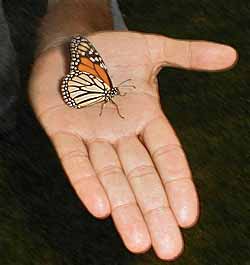Hand
Injury
Hand injuries account for 5 to 10-percent
of all emergency room visits in the U. S. Of these, approximately
one-half are due to lacerations and one-fourth due to contusions.
The other most common kinds of hand injuries include those due
to blunt trauma, burns, avulsion and ring avulsion.
The hand's muscles, ligaments, tendons,
cartilage, nerves and blood vessels are all vulnerable to injury.
Sprains are also common hand injuries. Sprains cause
pain, swelling and inflammation but usually cause no permanent
damage. Dislocations in the hand are uncommon, but when they occur,
they are often accompanied by lacerations.
Ligament injuries occur frequently and are often misdiagnosed
since they may present as sprains. The inability to hold object
between the thumb and four fingers is an indication of a possible
injury to the ulnar collateral ligament (UCL). This kind of injury
is also known as Gamekeeper's Thumb. The most common skiing injury
is to the UCL.
Many other sports account for hand injuries such as baseball,
football, basketball and even rock climbing. Rock climbing has
accounted for many trips to the doctor's office since this particular
sport is very hand intensive and can exacerbate other injuries
such as carpal tunnel syndrome, tendonitis and arthritis.
Fractured bones are also a common type of hand injury. Breaks
can occur near the knuckle, mid-bone, or wrist. Fractures, particularly,
need to be diagnosed and treated quickly for optimal results.
The physician needs to order X-rays and perform some range of
motion tests in order for proper diagnosis. Also, an assessment
as to the feeling in the fingers needs to be taken so that nerve
damage may be considered or ruled out.
Some severe hand fractures require surgery. Wires, screws or
plates may be implanted by the orthopedic surgeon to stabilize
the hand. If one of the bones rotates during healing, loss of
some functionality in the hand may result. After healing has occurred
the surgeon may either remove the implants or leave them in.
Nerve injuries are also one of the common hand injuries. Nerve
injuries usually have to be repaired by microsurgery. The surgeon
may need to repair the sheath around the nerve or perform a nerve
graft in order to repair the damaged area. Once a nerve is repaired,
healing usually begins three or four weeks after surgery. As a
rule of thumb, nerves grow back at a rate of one-inch per month,
so an injury that occurs in the arm above the fingertips may take
a year before feeling returns to the fingertips.
Preventing Hand Injuries
Many hand injuries occur on the job. Different occupation carry
different inherent risks so if is important that both employee
and management be informed and take steps to create an injury-free
workplace.
OSHA (Occupational Safety & Health Administration) has put
out a couple of valuable documents, Personal
Protective Equipment for the general public and
How
to Prevent Needle Stick
Injuries for the medical field, to
show how people can take precautions to guard against hand injuries.
Some of the protective hand equipment includes:
- Gloves
- Barrier cream
- Finger cots
- Bandages
If you have suffered a hand injury due to the negligence
of others, it is wise to contact a personal
injury attorney to find out all of your options. The sooner
an attorney is contacted, the sooner they can start gathering
the needed documents if they think a case can be made on your
behalf.
|


